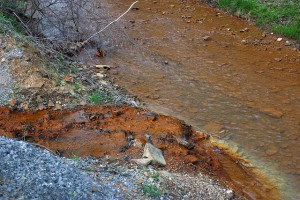Neonicotinoids from treated seeds contaminate Midwestern streams
 Photo credit: I love mountains.org
Photo credit: I love mountains.org
A recent study published in Environmental Pollution found neonicotinoids in Midwestern streams where corn and soybean production is high. Scientists with the U.S. Geological Survey sampled surface water from streams within Iowa for neonicotinoid contamination. Streams were tested for imidacloprid, clothianidin and thiamethoxam. All streams tested positive for at least one of the neonicotinoid pesticides, and most streams contained more than one, even in areas where less land was under cultivation. Results also revealed that water contamination was highest early in the planting season, the time pesticide-treated seeds are planted and when it rains more frequently, leading to increased runoff. The pesticides clothianidin and thiamethoxam were found in higher concentrations than imidacloprid. While little information exists on the toxicity of these two neonicotinoids on aquatic animals, they are expected to have effect levels similar to that of imidacloprid. If this is the case, surface water concentrations in some streams may be higher than the level at which even one exposure is harmful. The authors conclude that “the use of neonicotinoids via seed treatments as a near universal pest management practice in the U.S. needs to be closely examined in relation to environmental impacts of these insecticides and its importance in the transport of neonicotinoids to streams.”


